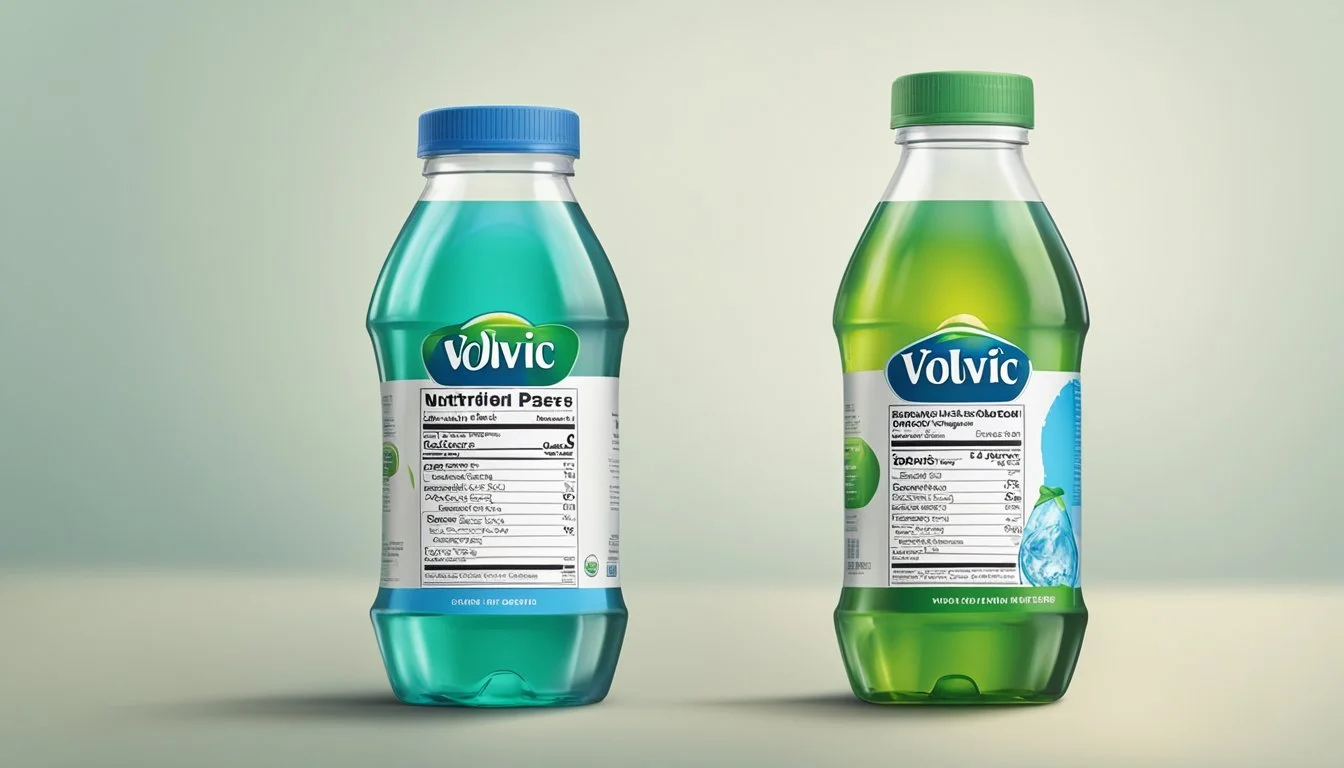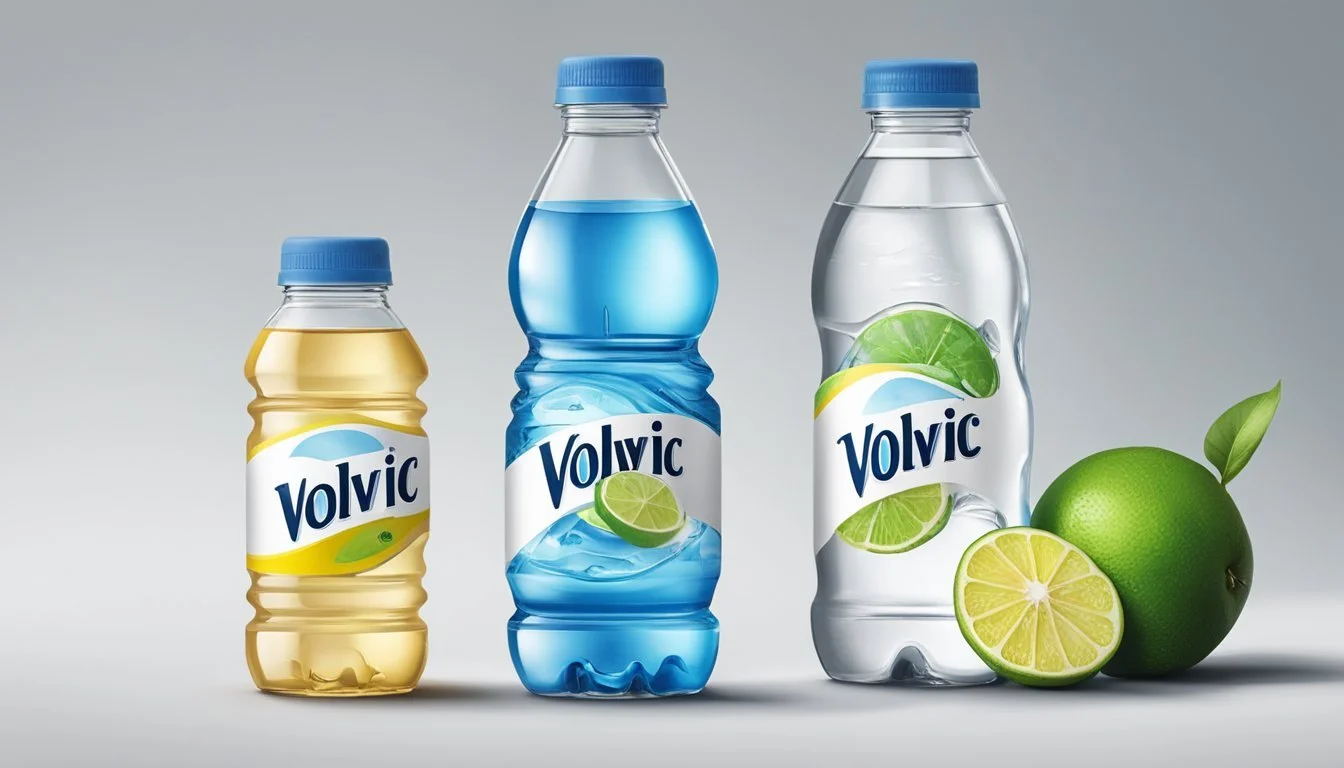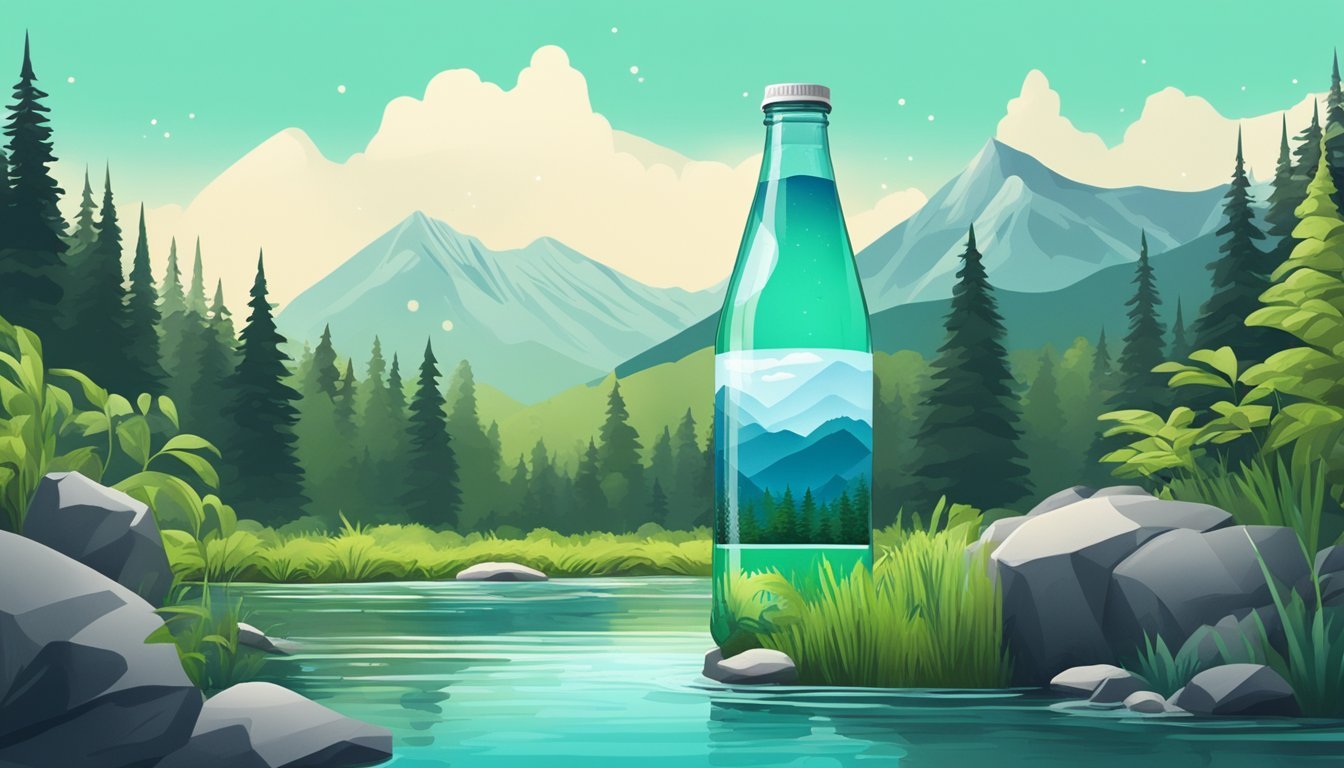Volvic vs. Weird Water
Which Bottled Water is Better? A Detailed Comparison
Choosing the right bottled water can sometimes be overwhelming, with countless options available on the market. Among these choices, Volvic and Weird Water often come up in discussions about quality and taste. Volvic, sourced from the volcanic region of France, is known for its purity and slightly alkaline pH, which some health enthusiasts claim promotes better hydration. On the other hand, Weird Water is known for its unique blend of minerals and distinct taste, appealing to those who prefer a more flavorful hydration experience.
Volvic offers a balanced taste and mineral content, making it a solid choice for those seeking a neutral and smooth drinking experience. It boasts a mineral composition that contributes to its clean taste without overpowering the palate. Meanwhile, Weird Water stands out due to its bold and often complex flavor profile, which can be either a hit or miss depending on personal preference.
When it comes to hydration and daily consumption, Volvic's consistent quality and mild taste make it a reliable option for many. Weird Water, with its more adventurous flavor, appeals to those looking to try something different. Both brands bring unique elements to the table, catering to distinct preferences and hydration needs.
Understanding Bottled Water
Bottled water comes in various types, each with its specific source and filtration processes. Regulations ensure quality and safety, and different natural sources contribute to the water's mineral content and taste.
Types of Bottled Water
There are several types of bottled water, including spring water, mineral water, purified water, and alkaline water.
Spring water is collected from natural springs and often undergoes minimal processing. This type of water retains natural minerals.
Mineral water has a higher mineral content and is sourced from mineral springs. These minerals can include calcium, magnesium, and potassium, which contribute to both taste and potential health benefits.
Purified water comes from any source, including tap water, but undergoes extensive filtration processes such as reverse osmosis or distillation to remove contaminants.
Alkaline water has a higher pH level and is thought to neutralize acidity in the body. It's often produced by adding minerals to purified water or treating spring water to increase its alkalinity.
Bottled Water Regulations
Each country has specific regulations governing bottled water to ensure safety and quality. In the United States, the Food and Drug Administration (FDA) oversees bottled water, ensuring it meets standards for contaminants like bacteria, heavy metals, and chemicals.
Labeling is an essential aspect of these regulations. Bottled water labels must accurately reflect the source and treatment processes. For example, if the bottle is labeled as spring water, it must indeed come from a spring.
Bottled water must also meet specific microbiological and chemical standards. Inspections and monitoring help maintain compliance with these regulations, protecting consumers from potential health risks. Water companies often conduct regular testing to maintain the required standards.
Water Sources and Natural Filtration
The source of bottled water plays a crucial role in its quality and characteristics. Common sources include natural springs, wells, and municipal supplies. Natural spring water and mineral water often undergo a natural filtration process, passing through layers of soil and rock, which adds minerals and removes impurities.
This natural filtration is key to the water’s unique mineral content and taste. Volvic, for example, is known for its volcanic filtration, adding a distinct mineral composition.
Municipal sources, used for purified water, require additional treatment to match the purity and mineral content found in natural spring and mineral water. Effective filtration methods like reverse osmosis or activated carbon filters remove impurities from tap water, ensuring it meets safety standards for consumption.
Brand Profiles: Volvic and Weird Water
Volvic and Weird Water offer distinct qualities that separate them in the bottled water industry. Key differences include their sources and unique selling points, which cater to different preferences.
Volvic: Sourced from Volcanic Rock
Volvic water originates from the Auvergne region of France. This area is known for its ancient volcanic landscape. The water is naturally filtered through six layers of volcanic rock over several years.
Volvic's geological filtration process enriches the water with essential minerals like silica, calcium, and magnesium.
This natural process also ensures that Volvic water maintains a consistent pH level, typically around 7.0 to 7.5. This slightly alkaline pH is believed to be beneficial for hydration and overall health.
Weird Water's Unique Proposition
Weird Water sets itself apart with its striking marketing and focus on sustainability. The brand emphasizes using eco-friendly packaging, which includes biodegradable and recyclable materials.
Moreover, Weird Water is often sourced from multiple springs, ensuring a unique blend of taste and mineral content in each batch. This approach aims to offer consumers a distinctive and refreshing experience.
Weird Water also places a significant emphasis on its health benefits, claiming to offer higher hydration levels through optimal mineral content. This focus attracts health-conscious consumers looking for an alternative to traditional bottled water options.
Nutritional Content and Health Effects
When comparing Volvic and Weird Water, it is essential to examine their mineral content and pH levels. These factors directly impact their health benefits and overall quality.
Minerals and Health Benefits
Volvic water is known for its mineral content, which includes calcium, magnesium, and silica. These minerals are crucial for maintaining bone health, muscle function, and skin elasticity. Calcium supports strong bones and teeth, while magnesium is vital for muscle relaxation and nerve function.
Silica in Volvic helps with skin health and joint function. Electrolytes in both Volvic and Weird Water aid in hydration by replenishing lost minerals, especially after physical activity.
Weird Water's mineral content may differ, but it also provides essential nutrients. Checking the label for specific mineral values in each bottle helps consumers make informed choices based on their dietary needs.
Evaluating pH Levels and Alkalinity
PH levels indicate the acidity or alkalinity of water, ranging from 0 to 14. Volvic's pH level is about 7, which is neutral, suggesting a balanced impact on the body. Neutral pH levels help maintain the body's natural balance without causing acid reflux or alkalosis.
Weird Water's pH level can vary. Although less common, some bottled waters have a higher pH, making them alkaline. Alkaline water is believed to neutralize stomach acid and improve hydration.
Both Volvic and Weird Water offer hydration, but their pH levels and alkalinity play distinct roles in consumers' health preferences.
Taste and Quality Comparison
The taste and quality of Volvic and Weird Water are influenced by several factors, including water source, mineral content, and filtration processes.
Factors Affecting Water Taste
Mineral Composition: The mineral content in water greatly impacts its taste. Volvic, sourced from the volcanic Auvergne region in France, boasts a unique mineral profile that contributes to its slightly alkaline and refreshing taste. Weird Water, depending on its source, might have a different mineral composition which affects its taste profile.
Contaminants: Presence of contaminants like chlorine or fluoride can significantly alter the taste of bottled water. Volvic is known for its natural purity and minimal contaminants, making it appealing to many. Weird Water’s taste could vary depending on how effectively contaminants are removed during processing.
Source of Water: Volvic comes from a well-protected, natural spring in France, known for its volcanic filtration. This natural process impacts its taste by enriching the water with beneficial minerals. Weird Water can come from various sources, making its taste more variable depending on the purity and natural mineral content of the source.
Quality Control and Standardization
Quality Control Measures: Ensuring consistent quality is crucial for bottled water brands. Volvic undergoes stringent quality control measures to maintain its purity and taste. These include rigorous testing for contaminants and regular assessments of mineral content. Weird Water's quality control processes may differ, influencing the consistency and safety of the product.
Standardization Practices: Standardization in bottled water production ensures that each bottle meets set safety and quality standards. Volvic adheres to high standards, monitored by both internal and external bodies, to ensure uniform taste and quality in every bottle. Weird Water's adherence to standardization practices ensures it meets basic health regulations but could vary by brand and source.
Certifications and Accreditations: Volvic holds various certifications attesting to its quality and environmental practices. Certifications ensure that the water is consistently pure and safe to drink. Weird Water, depending on the brand, might have different certifications that reflect its production standards and quality controls.
By examining these factors, one can appreciate the different elements that contribute to the taste and quality of Volvic and Weird Water.
Environmental Concerns and Sustainability
Volvic and Weird Water are analyzed in terms of their impact on the environment, focusing on their packaging choices, waste, and overall carbon emissions.
Plastic Waste and Pollution
Plastic bottles contribute significantly to environmental pollution.
Volvic and Weird Water both use plastic packaging, but the extent of their waste management efforts differ. Volvic utilizes PET plastic, which is recyclable, yet a large portion still ends up in landfills or oceans. Weird Water opts for BPA-free plastic, aiming to reduce harmful chemical leaching.
However, the challenge remains in ensuring these bottles are consistently recycled, as improper disposal can lead to substantial oceanic and terrestrial pollution. Reducing plastic waste is imperative to minimize the long-term environmental impact.
Packaging Innovations
Innovative packaging can mitigate environmental harm.
Volvic integrates eco-friendly packaging alternatives, including recycled PET (rPET) bottles, attempting to lower plastic waste. This shift targets reducing new plastic production by reusing existing materials. Weird Water explores paper-based cartons sourced from sustainably managed forests, presenting an alternative with less environmental burden.
By focusing on sustainable materials that are easier to recycle, these brands aim to reduce their ecological footprint. Eco-conscious consumers are increasingly favoring products that prioritize environmental safeguarding through innovative packaging.
Carbon Footprint of Bottled Water
The transportation and production processes significantly influence a brand's carbon footprint.
Volvic and Weird Water must consider carbon emissions throughout their supply chains. Transporting bottled water releases a substantial amount of carbon dioxide. Volvic, sourced from France, may have higher transport emissions when distributed internationally compared to local distribution.
Efforts to minimize these emissions include optimizing logistics and employing renewable energy in production facilities. Both brands can reduce their carbon footprint by sourcing locally and utilizing green energy, thus lessening their contribution to climate change. This conscious approach can make bottled water a more sustainable choice for consumers.
The Role of Brands in the Market
In the competitive bottled water market, brands play a pivotal role through innovation and by meeting consumer preferences. Analyzing market leaders and the choices made by consumers reveals the dynamics of brand influence.
Market Leaders and Innovators
Well-known brands such as Evian, Aquafina, and Dasani dominate the market with their extensive reach and consistent quality. Evian, known for its premium image, sources its water from the pristine French Alps, offering a unique selling point.
Essentia and Fiji also stand out as market leaders due to their high-quality offerings. Essentia boasts an alkaline pH and added electrolytes. Fiji is famous for its naturally occurring electrolytes and soft taste. These innovations cater to consumers looking for health benefits and distinctive flavors.
Brands like Smartwater and Voss focus on purity and stylish packaging. Smartwater undergoes vapor distillation for purity, while Voss uses an elegant glass bottle design to appeal to a premium market. Each of these brands continuously works on improving their product to meet changing consumer demands, setting industry standards.
Consumer Preferences and Choices
Consumers often choose bottled water based on perceived health benefits and taste. Brands like Poland Spring and Arrowhead offer natural spring water that appeals to those wanting a cleaner and more natural option. Zephyrhills and Ice Mountain also fall into this category, providing regional preference and local flavor.
Dasani and Aquafina, produced by Coca-Cola and PepsiCo respectively, are prominent for their widespread availability and competitive pricing. These brands cater to a broad audience, focusing on affordability and convenience.
Niche brands such as Core Hydration, known for balanced pH, and Boxed Water, which emphasizes sustainability with eco-friendly packaging, target specific consumer desires. Just Water and Lifewtr offer similar unique selling points, focusing on environmentally conscious consumers.
Nestlé Pure Life and Pure Life command a significant share due to Nestlé's vast distribution network and affordable pricing. These brands ensure accessibility, influencing consumer choices based on reliability and budget-friendly options.
Conclusion
Both Volvic and Weird Water offer unique qualities that cater to different consumer preferences.
Water Quality
Volvic is known for its neutral pH of 7, making it a balanced choice for everyday hydration. Weird Water, with its more intricate filtration process, might appeal to those looking for ultra-purified water.
Hydration
Both brands aim to provide optimal hydration. Volvic, sourced from volcanic regions, offers a refreshing taste that can support an active lifestyle. Weird Water's purity ensures that contaminants are minimized.
Health
Volvic's mineral content is derived from natural volcanic filtration, potentially providing additional health benefits. Weird Water focuses on removing impurities, suitable for consumers prioritizing cleanliness in their drinking water.
Overall Quality
Volvic positions itself as a vitalizing and natural choice. Weird Water presents itself as a highly purified option, often targeting those focused on water purity.
Quick Comparison
Feature Volvic Weird Water Source Volcanic regions Advanced filtration processes pH Level Neutral (7) Varies, usually neutral or slightly acidic Target Audience Active, health-conscious individuals Pure water enthusiasts Unique Attribute Natural minerals from volcanic activity Advanced purification techniques
Each brand has crafted a unique identity that resonates differently with its audience. Volvic aligns with natural purity and an active lifestyle. Weird Water is synonymous with ultra-purity and modern filtration methods.
Choosing between Volvic and Weird Water depends on individual preferences regarding water source, mineral content, and purification methods. Both stand out in their respective niches.
More About Volvic
Mountain Valley Spring Water vs Volvic: Which Bottled Water is Better?
Volvic vs Kirkland Signature: Which Bottled Water is Better?
Volvic vs Richard's Rainwater: Which Bottled Water is Better?
Volvic vs Whole Foods Italian Still Mineral water: Which Bottled Water is Better?
More About Weird Water
Aqua Carpatica vs Weird Water: Which Bottled Water is Better?
Cascade Mountain vs Weird Water: Which Bottled Water is Better?
Core Hydration vs Weird Water: Which Bottled Water is Better?
Crystal Geyser vs Weird Water: Which Bottled Water is Better?
Hawaii Volcanic vs Weird Water: Which Bottled Water is Better?
Hawaiian Springs vs Weird Water: Which Bottled Water is Better?
Icelandic Glacial vs Weird Water: Which Bottled Water is Better?
Mountain Valley Spring Water vs Weird Water: Which Bottled Water is Better?
Nestle Pure Life vs Weird Water: Which Bottled Water is Better?
Poland Spring vs Weird Water: Which Bottled Water is Better?
Purely Sedona vs Weird Water: Which Bottled Water is Better?
Richard's Rainwater vs Weird Water: Which Bottled Water is Better?
San Pellegrino vs Weird Water: Which Bottled Water is Better?
Solan de Cabras vs Weird Water: Which Bottled Water is Better?
Talking Rain AQA vs Weird Water: Which Bottled Water is Better?
Weird Water vs Kirkland Signature: Which Bottled Water is Better?
Weird Water vs Whole Foods 365: Which Bottled Water is Better?
Whole Foods Italian Still Mineral water vs Weird Water: Which Bottled Water is Better?







